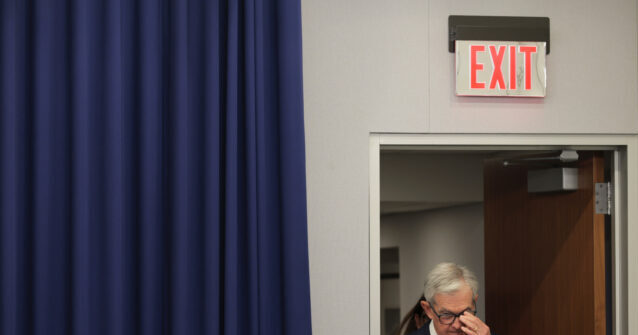Federal Reserve officials are sharply divided over how aggressively to cut interest rates, with some warning that the central bank risks falling dangerously behind in addressing a deteriorating labor market while others remain focused on stubborn inflation that has persisted well above target for more than four years.
The splits, revealed in a series of speeches and interviews since the Fed’s quarter-point rate cut last week, underscore the difficult position facing policymakers as they navigate an economy reshaped by sweeping changes in trade, immigration and fiscal policy.
The tensions center on a fundamental question: With unemployment rising and hiring slowing dramatically, can the Fed afford to move cautiously on rate cuts when inflation pressures may prove more manageable than feared?
Governor Stephen I. Miran, the Fed’s newest member, offered the starkest assessment in a speech Monday, arguing that monetary policy is “very restrictive” and poses “material risks to the Fed’s employment mandate.” He estimated the appropriate federal funds rate should be around 2 to 2.5 percent — nearly two percentage points below the current level of 4 to 4.25 percent.
“Leaving policy restrictive by such a large degree brings significant risks for the Fed’s employment mandate,” Miran warned in remarks to the Economic Club of New York.
His views stand in sharp contrast to those of Atlanta Fed President Raphael Bostic, who said in an interview with The Wall Street Journal that he penciled in only one rate cut for all of 2025 and doesn’t expect the need for further reductions this year. Bostic projects inflation won’t return to the Fed’s 2 percent target until 2028.
“I am concerned about the inflation that has been too high for a long time,” Bostic said, adding that he would not favor cutting rates again in October.
The policy divide comes as economic data paint a picture of an economy under strain. Job creation has slowed to just 29,000 positions per month over the past three months — well below the pace needed to keep unemployment stable, even after accounting for the smaller labor supply due to tighter immigration policies. The unemployment rate has risen to 4.3 percent, and several Fed officials have noted concerning signs in the labor market, including rising joblessness among cyclically sensitive groups like younger workers and African Americans.
At the same time, new data suggest businesses are absorbing the costs of tariffs rather than passing them on to consumers, potentially providing relief on inflation pressures that many policymakers had feared would be more severe.
The September purchasing managers’ survey from S&P Global showed companies in manufacturing and services reported sharply higher input costs from tariffs, but weak demand and fierce competition prevented most from raising prices. The result was the weakest goods inflation since January.
“Although tariffs were again cited as a driver of higher input costs across both manufacturing and services, the number of companies able to hike selling prices to pass these costs on to customers has fallen, hinting at squeezed margins but boding well for inflation to moderate,” said Chris Williamson, chief business economist at S&P Global Market Intelligence.
Vice Chair for Supervision Michelle W. Bowman pointed to the shifting dynamics in arguing for a more aggressive approach to easing policy. Labor market conditions have deteriorated and hiring has slowed, she said Tuesday, while wage growth has decelerated to “a pace consistent with 2 percent inflation.”
“I am concerned that the labor market could enter into a precarious phase and there is a risk that a shock could tip it into a sudden and significant deterioration,” Bowman said in remarks to the Kentucky Bankers Association. She argued the Fed should move policy toward neutral and consider further easing given signs of fragility in employment.
The warnings about labor market risks carry particular weight given the Fed’s painful experience during the 2008 financial crisis, when officials were slow to recognize the severity of economic weakness. Several Fed researchers have noted that once unemployment begins rising, it can accelerate quickly.
Miran emphasized this point, arguing that a “strict interpretation of data dependence is inherently backward-looking and would guarantee that we remain behind the curve, requiring us to overcorrect in the future.”
Other officials remain more cautious. St. Louis Fed President Alberto G. Musalem said Monday that while he supported last week’s rate cut, there is “limited room for easing further without policy becoming overly accommodative.” He cited concerns about above-target inflation becoming entrenched if the Fed leans too heavily toward supporting employment.
Powell, speaking in Rhode Island on Tuesday, sought to strike a middle ground, acknowledging “two-sided risks” that make monetary policy challenging. The Fed faces upside risks to inflation and downside risks to employment, he said, noting that “when our goals are in tension like this, our framework calls for us to balance both sides of our dual mandate.”
But the economic data may be tilting the balance. Recent research suggests that demographic changes and policy shifts — including reduced immigration and higher national saving from tariff revenue — may have lowered the neutral interest rate more than previously understood. If accurate, that would mean current monetary policy is more restrictive than officials realize.
The stakes are high for getting the balance right. Fed officials note that financial conditions remain supportive, with elevated profit margins and solid corporate earnings suggesting the economy retains underlying strength. But they also acknowledge that a misstep — either allowing inflation to re-accelerate or letting the labor market weaken unnecessarily — could undermine the central bank’s credibility.
“Our success in delivering on these goals matters to all Americans,” Powell said. “We understand that our actions affect communities, families, and businesses across the country.”
As officials look ahead to their next meeting in late October, the debate over the appropriate pace of rate cuts seems likely to intensify, with economic data in the coming weeks potentially tipping the scales toward either more aggressive easing or a more cautious approach.
Read the full article here
